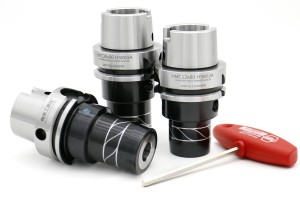1. Technical features and advantages of spinning toolholders
The spinning toolholder adopts mechanical rotation and clamping method to generate radial pressure through the thread structure. Its clamping force can usually reach 12000-15000 Newtons, which is suitable for general processing needs.
The spinning toolholder has the characteristics of simple structure and convenient maintenance. The clamping accuracy can reach 0.005-0.01 mm and it performs stably in conventional processing.
It has high cost performance, and the purchase cost is usually between 200-800USD. It is the preferred tool for many small processing companies.
2. Technical features and advantages of hydraulic toolholders
The hydraulic toolholder adopts the principle of high-pressure oil transmission to generate uniform radial pressure through hydraulic medium. The clamping force can reach 20,000-25,000 Newtons, far exceeding the spinning toolholder.
The clamping accuracy of the hydraulic toolholder is as high as 0.003 mm, and the coaxiality is controlled within the range of 0.002-0.005 mm to ensure the processing accuracy.
It has excellent anti-vibration performance, and the vibration amplitude is reduced by more than 40% compared with the spinning toolholder during high-speed cutting.
3. Comparison of key performances of the two toolholders
Clamping stability: The 360-degree uniform force of the hydraulic toolholder is significantly better than the local force of the spinning toolholder.
Dynamic balance performance: When the hydraulic toolholder is running at a high speed of more than 20,000 rpm, the dynamic balance level can reach G2.5, while the spinning toolholder is generally G6.3.
Service life: Under the same working conditions, the service life of the hydraulic toolholder is usually 2-3 times that of the spinning toolholder.
4. Analysis of applicable processing scenarios
Spinning toolholders are suitable for:
A. Processing of parts with ordinary precision, such as ordinary mechanical parts, building accessories, etc.
B. Conventional cutting with a speed below 8000 rpm.
Hydraulic toolholders are suitable for:
1. Precision parts processing, such as aerospace parts, medical equipment, etc.
2. High-speed cutting occasions, especially applications with a speed exceeding 15,000 rpm.
5. Key points for use and maintenance
Spinning toolholders need to check the thread mechanism regularly, and it is recommended to clean and maintain it every 200 hours of use.
Pay attention to the integrity of the sealing ring for hydraulic toolholders, and it is recommended to check the hydraulic oil level and system sealing every 100 hours.
Both toolholders need to keep the handle clean to avoid erosion by chips and coolant.
Post time: Dec-05-2024










